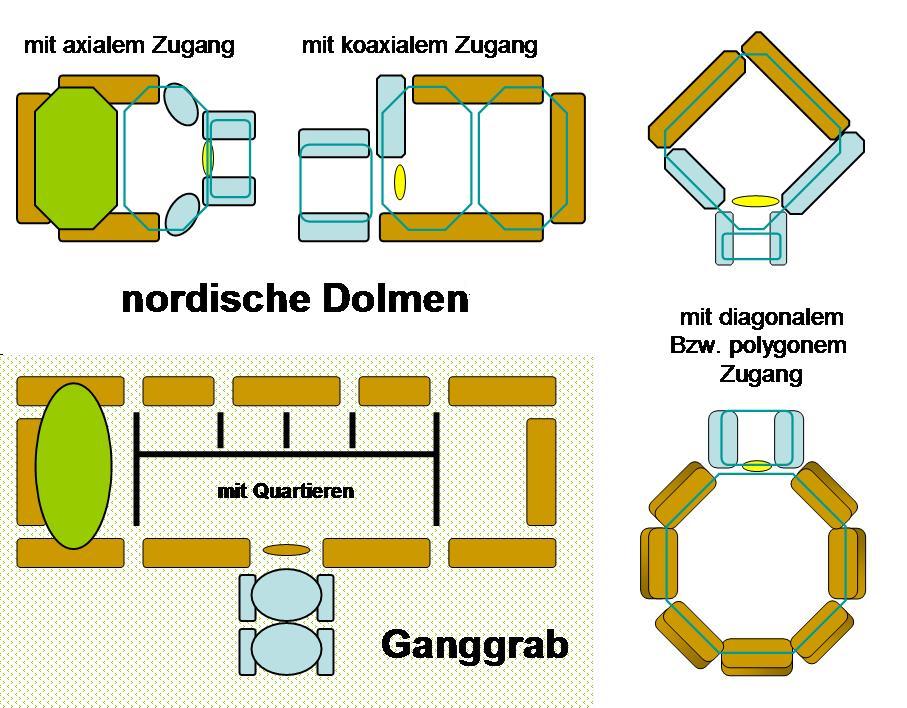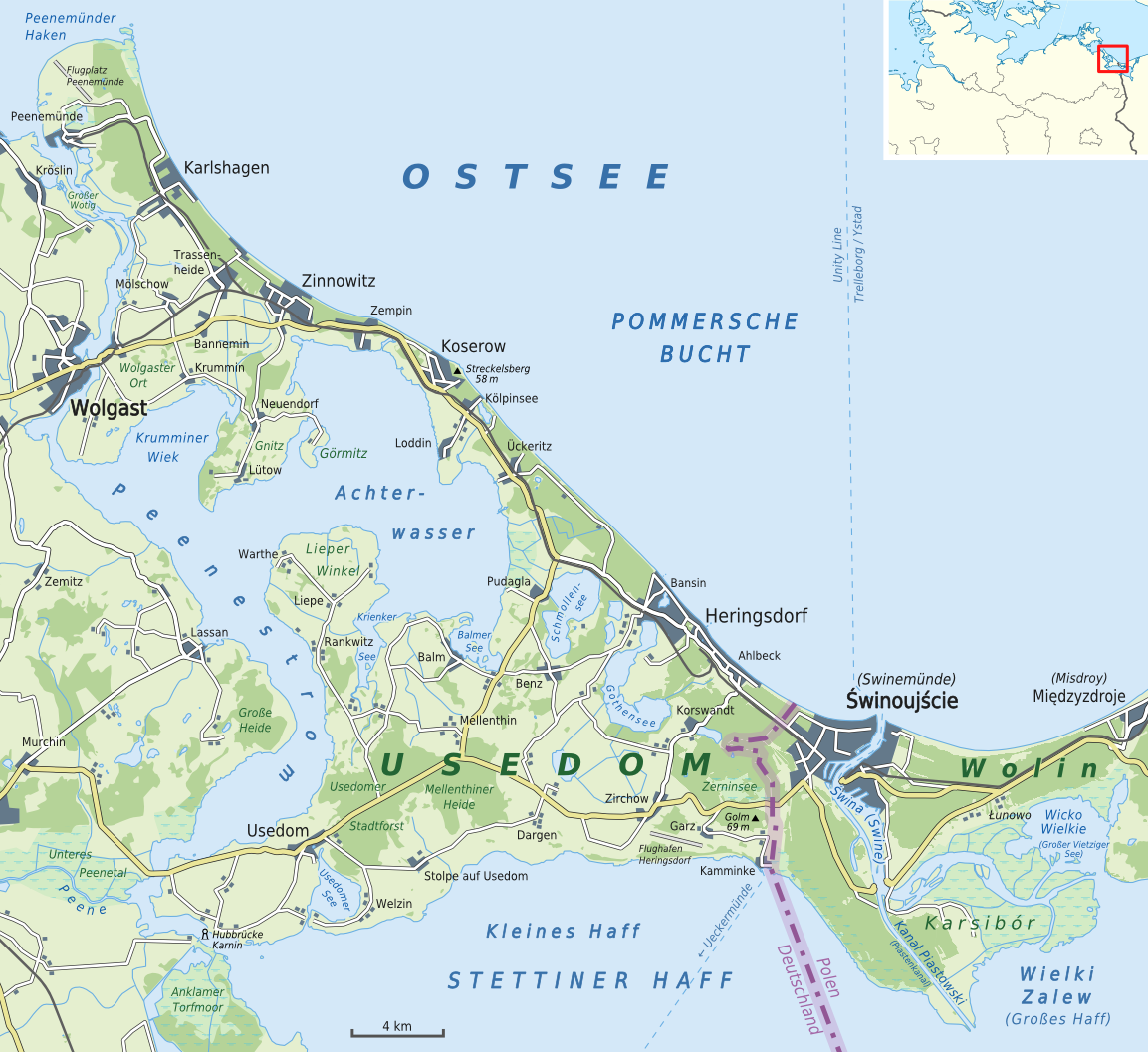|
Great Dolmen
The great dolmen or grand dolmen (german: Großdolmen, da, Stordysse) is a type of megalithic site of the Funnelbeaker culture (TBK) that occurs in Nordic megalith architecture, primarily in the east of what is now German Mecklenburg-Vorpommern, and which has two different types of entrance. Neolithic monuments are features of the culture and ideology of Neolithic communities. Their evolution and function act as indicators of social development.J. Müller In: Varia neolithica VI 2009 p. 15 The type of site, called ''Stordysse'' in Danish, does not follow the criteria listed below. In Germany, dolmens with three or more capstones are described as great dolmens and are divided into: * Great dolmens with an antechamber (''Vorraum'') * Great dolmens with a porch (''Windfang'') The porch dolmen is mainly found on the island of Rügen and on the mainland opposite the island. The antechamber dolmen is found southeast of that, between Demmin and the island of Usedom. Several variant, b ... [...More Info...] [...Related Items...] OR: [Wikipedia] [Google] [Baidu] |
Schleswig-Holstein
Schleswig-Holstein (; da, Slesvig-Holsten; nds, Sleswig-Holsteen; frr, Slaswik-Holstiinj) is the northernmost of the 16 states of Germany, comprising most of the historical duchy of Holstein and the southern part of the former Duchy of Schleswig. Its capital city is Kiel; other notable cities are Lübeck and Flensburg. The region is called ''Slesvig-Holsten'' in Danish and pronounced . The Low German name is ''Sleswig-Holsteen'', and the North Frisian name is ''Slaswik-Holstiinj''. In more dated English, it is also known as ''Sleswick-Holsatia''. Historically, the name can also refer to a larger region, containing both present-day Schleswig-Holstein and the former South Jutland County (Northern Schleswig; now part of the Region of Southern Denmark) in Denmark. It covers an area of , making it the 5th smallest German federal state by area (including the city-states). Schleswig was under Danish control during the Viking Age, but in the 12th century it escaped full co ... [...More Info...] [...Related Items...] OR: [Wikipedia] [Google] [Baidu] |
Vera Leisner
Georg and Vera Leisner were married German prehistorians and archaeologists who, after becoming a Lt Colonel and a nurse, spent many years studying fourth and third millennia BCE megalithic sites in Iberia. The work of the Leisners is widely acknowledged as one of the most important contributions to the study of the megalithic phenomenon in Iberia. They produced numerous publications on this topic, almost all published jointly, which remain the classic reference works on the Portuguese and Spanish megalithic. They developed a systematic method of research based on direct observation, drawings and photographs, coupled with the discussion of available sources. Over several decades, they visited, studied and described hundreds of megalithic monuments throughout Spain and Portugal. Vera Leisner (born Amanda Vera de la Camp) was born in New York on 4 February 1885 and died in Hamburg on 31 May 1972. Her husband, who was fifteen years older, was born in Kiel on 2 September 1870 and died ... [...More Info...] [...Related Items...] OR: [Wikipedia] [Google] [Baidu] |
Guardian Stones
Guardian stones (german: Wächtersteine) are standing stones, always occurring in pairs, at the corners of rectangular and trapezoidally-arranged stone enclosures (hunebeds) around a dolmen. They are found especially in Scandinavia, in the German states of Mecklenburg-Vorpommern, Lower Saxony ('' Salongrab''), Saxony-Anhalt ( Drebenstedt, Leetze, Winterfeld) and occasionally in Holstein (''Alter Hau''). They are strikingly large stone blocks that form the corner post of enclosures or project above them like antae and lend the stone enclosures a monumental appearance. Guardian stones are typical of trapezoidal enclosures. In Germany the most impressive examples of trapezoidal sites are Dwasieden, Dummertevitz and Nobbin on the island of Rügen. * At the Great Dolmen of Dwasieden, guardian stones of 3.3 and 3.5 metres in height guard the wide end of the dolmen and ones of 1.4 and 1.6 metres high stand sentinel at the narrow end. * At the wide end of the trapezoidal enclosure o ... [...More Info...] [...Related Items...] OR: [Wikipedia] [Google] [Baidu] |
Nadelitz
Nadelitz is a village in the borough of Putbus on the German Baltic Sea island of Rügen. It is a district of the town Putbus in Landkreis Vorpommern-Rügen in Mecklenburg-Vorpommern. Geography and Transport Nadelitz is located east of the town of Putbus on the Landesstraße 29. To the northeast runs the Bundesstraße 196. To the southwest is the 157 ha large nature reserve Goor-Muglitz. Attractions * Fieldstone barn of the former estate (village street) * Farm worker house (Dorfstraße 11) * Farmers house (Dorfstraße 12) See also *Great dolmen The great dolmen or grand dolmen (german: Großdolmen, da, Stordysse) is a type of megalithic site of the Funnelbeaker culture (TBK) that occurs in Nordic megalith architecture, primarily in the east of what is now German Mecklenburg-Vorpommern, ... References Vorpommern-Rügen Putbus Towns and villages on Rügen {{VorpommernRügen-geo-stub ... [...More Info...] [...Related Items...] OR: [Wikipedia] [Google] [Baidu] |
Trilithon
A trilithon or trilith is a structure consisting of two large vertical stones (posts) supporting a third stone set horizontally across the top (lintel). It is commonly used in the context of megalithic monuments. The most famous trilithons are those of Stonehenge in England. The word ''trilithon'' is derived from the Greek "having three stones" (τρι- ''tri-'' "three" + λίθος ''líthos'' "stone") and was first used in its modern archaelogical sense by William Stukeley. Other famous trilithons include those found in the Megalithic temples of Malta (which like Stonehenge are a UNESCO World Heritage Site), the Osireion in Egypt, and the Haʻamonga ʻa Maui in Tonga, Polynesia. The term is also used to describes the groups of three stones in the Hunebed tombs of the Netherlands. See also * Dolmen * Standing stone * Henge * Megalithic architectural elements This article describes several characteristic architectural elements typical of European megalithic (Sto ... [...More Info...] [...Related Items...] OR: [Wikipedia] [Google] [Baidu] |
Passage Grave
A passage grave or passage tomb consists of one or more burial chambers covered in earth or with stone, and having a narrow access passage made of large stones. These structures usually date from the Neolithic Age, and are found largely in Western Europe. When covered in earth, a passage grave is a type of burial mound which are found in various forms all over the world. When a passage grave is covered in stone, it is a type of cairn. Construction and design The building of passage graves was normally carried out with megaliths along with smaller stones. The earliest passage tombs seem to take the form of small dolmens, although not all dolmens are passage graves. The passage itself, in a number of notable instances, is aligned in such a way that the sun shines through the passage, into the chamber, at a significant point in the year, often at sunrise on the winter solstice or at sunset on the equinox. Many later passage tombs were constructed at the tops of hills or mountains, in ... [...More Info...] [...Related Items...] OR: [Wikipedia] [Google] [Baidu] |
Gallery Grave
A gallery grave is a form of megalithic tomb built primarily during the Neolithic Age in Europe in which the main gallery of the tomb is entered without first passing through an antechamber or hallway. There are at least four major types of gallery grave (complex, transepted, segmented, and wedge-shaped), and they may be covered with an earthen mound (or "tumulus") or rock mound (or " cairn"). About gallery graves Archeologist T. Douglas Price argues that the gallery grave was a form of community burial site. Those placed in a gallery grave were most likely members of the same family or hamlet, and probably were intended to reinforce the sense of community. Gallery graves may be straight, or they may form an ell. In some cases, a burial chamber exists at the end of the gallery. The walls of gallery graves were built of orthostats, slab-like stones set upright in the earth. They were roofed with multiple flat stones, although the burial chamber (if one existed) was usually r ... [...More Info...] [...Related Items...] OR: [Wikipedia] [Google] [Baidu] |
Extended Dolmen
A rectangular dolmen (german: Rechteckdolmen), extended dolmen (German: ''erweiteter Dolmen'') or enlarged dolmen is a specific type of megalith, rectangular in shape, with upright sidestones and, usually, two capstones. The term rectangular dolmen was coined by Ekkehard Aner and is used especially in the German state of Schleswig-Holstein, where dolmens with this type of ground plan primarily occur. A more precise term, however, is extended dolmen, used by Ewald Schuldt and Ernst Sprockhoff, because these types of dolmen also occur with trapezoidal ground plans (e.g. the Gnewitz). Neolithic monuments are an expression of the culture and ideology of neolithic communities. Their emergence and function are a hallmark of social development. Capstones and passageway Whilst the simple dolmen as a rule only had one capstone (but could have two), the rectangular dolmen, which differs primarily in the orientation of its support stones (standing) from the simple dolmen (lying), usually ... [...More Info...] [...Related Items...] OR: [Wikipedia] [Google] [Baidu] |
Megalith
A megalith is a large stone that has been used to construct a prehistoric structure or monument, either alone or together with other stones. There are over 35,000 in Europe alone, located widely from Sweden to the Mediterranean sea. The word was first used in 1849 by the British antiquarian Algernon Herbert in reference to Stonehenge and derives from the Ancient Greek words "mega" for great and " lithos" for stone. Most extant megaliths were erected between the Neolithic period (although earlier Mesolithic examples are known) through the Chalcolithic period and into the Bronze Age. At that time, the beliefs that developed were dynamism and animism, because Indonesia experienced the megalithic age or the great stone age in 2100 to 4000 BC. So that humans ancient tribe worship certain objects that are considered to have supernatural powers. Some relics of the megalithic era are menhirs (stone monuments) and dolmens (stone tables). Types and definitions While "megalith" ... [...More Info...] [...Related Items...] OR: [Wikipedia] [Google] [Baidu] |
Usedom
Usedom (german: Usedom , pl, Uznam ) is a Baltic Sea island in Pomerania, divided between Germany and Poland. It is the second largest Pomeranian island after Rügen, and the most populous island in the Baltic Sea. It is north of the Szczecin Lagoon estuary of the Oder river. About 80% of the island belongs to the German district of Vorpommern-Greifswald in the state of Mecklenburg-Vorpommern. The eastern part and the largest city on the island, Świnoujście, are part of the Polish West Pomeranian Voivodeship. The island's total area is – in the German part and in the Polish part. Its population is 76,500 (German part 31,500; Polish part 45,000). With an annual average of 1,906 hours of sunshine, Usedom is the sunniest region of both Germany and Poland, and it is also one of the sunniest islands in the Baltic Sea, hence its nickname "Sun Island" (german: Sonneninsel, pl, Wyspa Słońca). The island has been a tourist destination since the Gründerzeit in the 19th ce ... [...More Info...] [...Related Items...] OR: [Wikipedia] [Google] [Baidu] |









